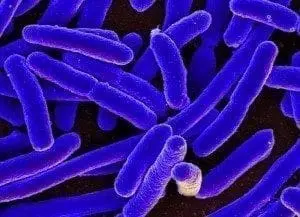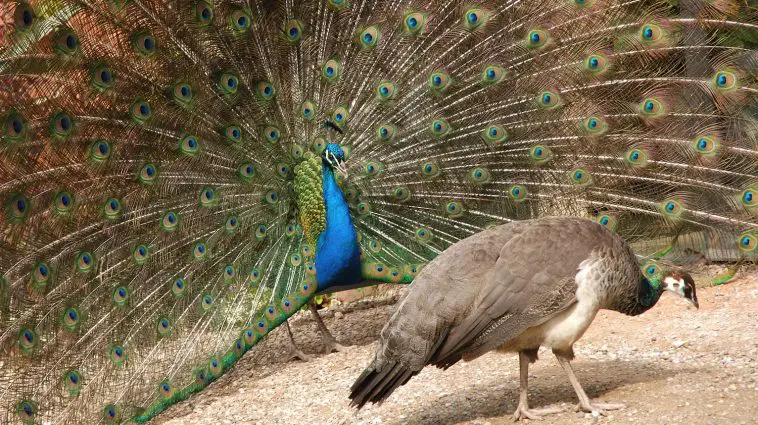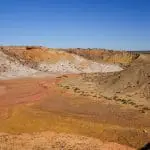[Originally published as Selection, Third Principle of Natural Selection]
Selection is the third of the five principles of natural selection, abbreviated as VISTA. Niles Eldredge, a paleontologist at the American Museum of Natural History, formulated this acronym to explain Charles Darwin’s theory of evolution. While selection is Darwin’s core principle, it is also the most controversial of the five.
For the museum’s Darwin exhibit, Eldridge uses the term VISTA to explain how the principles of variation, inheritance, selection, time, and adaptation drive natural selection. While selection is Darwin’s foundational acting principle, only speculation drives its nuts-and-bolts mechanisms in nature.
In The Origin of Species, Darwin introduced the principle of selection as the pivotal action driving evolution. In the words of Eldredge —
When [Darwin] formulated the principle of natural selection, he had discovered the central process of evolution.
Interestingly, English zoologist and chemist Edward Blyth introduced the phrase “natural process of selection” twenty years earlier. In the first chapter of The Origin of Species, Darwin credits Blyth, noting —
“Mr. Blyth, whose opinion, from his large and varied stores of knowledge, I should value more than that of almost anyone.”
Natural Selection
The title of Darwin’s historic book summarizes how the origin of earth’s biosphere happened “by means of natural selection”
On the Origin of Species by Means of Natural Selection, or the Preservation of Favoured Races in the Struggle for Life
The book was an instant bestseller, selling all 1,250 printed copies on the first day. However, critics quickly centered on challenging his similar but novel theory.
Definitions
Interestingly, in what was known as the progressive writing style at the time, Darwin did not include a definition of his two keywords, natural or selection, or the phrase natural selection. Only the 6th Edition included a Glossary written by W.S. Dallas, not Darwin.
However, based on Darwin’s explanations and inferences, “natural” means autonomy, free of intervention, and “selection” means to choose. Darwin’s explanations were often vague, driven more by speculations than scientific evidence. For example, Darwin explains —
In order to make it clear how, as I believe, natural selection acts, I must beg permission to give one or two imaginary illustrations.
This progressive writing style was popular during the Age of Enlightenment. Vagueness allowed readers the license to speculate on their own, a style that had already been successfully used by his grandfather, Erasmus Darwin. However, addressing conflicted explanations and criticisms from friends and foes prompted the writing of five significant revisions of his bestseller.
Between the 5th and the 6th editions alone, 63 sentences were eliminated, 1,699 sentences were re-written, and 517 sentences were added. “Natural selection” appears 315 times in the first edition and 405 times in the last. Eventually, Darwin acknowledged in The Origin of Species —
“Natural selection… is by far the most serious special difficulty which my theory has encountered.”
Selective Breeding
The title of Chapter I in The Origin of Species is “Variation Under Domestication.” Natural selection, Darwin argued, is analogous to domestic breeding practices of improving their herds.
As the principle of selection drives preferred varieties in domestic livestock, this principle likewise drives improvements in nature, Darwin argues —
Can the principle of selection, which we have seen is so potent in the hands of man, apply under nature? I think we shall see that it can act most efficiently.
Selection drives the changes —
“Over all these causes of Change, I am convinced that the accumulative action of Selection, whether applied methodically and more quickly, or unconsciously and more slowly, but more efficiently, is by far the predominant Power.”
Selection acts by choosing between available variations —
The great power of this principle of selection is not hypothetical. It is certain that several of our eminent breeders have, even within a single lifetime, modified to a large extent their breeds of cattle and sheep.
While the natural selection and selective breeding analogy once played an essential conceptual role, it has since emerged as a theoretical “origin of species” enigma.
“How Selection Acts” Critique
In an article published by Revue Horticole in 1852, French naturalist Charles Victor Naudin predated Darwin’s version of natural selection. Darwin critiqued Naudin’s theory in The Origin of Species beginning with the 3rd Edition, noting —
“In 1852, M. Naudin, a distinguished botanist, expressly stated, in an admirable paper on the origin of species… his belief that species are formed in an analogous manner as varieties are under cultivation; and the latter process he attributes to man’s power of selection. But he does not show how selection acts under nature.” 6th Edition.
With the phrase “show how selection acts under nature,” Darwin set the bar. Although not addressing the “how selection” issue, Darwin approached the “why issue” by introducing the concept of sexual selection.
Sexual Selection
Sexual selection is Darwin’s explanation to account for showy mating traits. This interest nearly matched his fascination with natural selection. Written in his “Old and Useless Notes“ in 1838, Darwin recorded searching for an answer to the question —
How does Hen determine most beautiful cock, which best singer?
Natural selection equips the struggle for existence. Sexual selection equips males and females with secondary sexual characters for intrasexual reproduction competition, Darwin explains —
“This leads me to say a few words on what I have called Sexual Selection. This form of selection depends, not on a struggle for existence in relation to other organic beings or to external conditions, but on a struggle between the individuals of one sex, generally the males, for the possession of the other sex. The result is not death to the unsuccessful competitor, but few or no offspring.”
The term “sexual selection” appears 21 times in The Origin of Species. Describing sexual selection further, Darwin notes —
Sexual selection has given the most brilliant colours, elegant patterns, and other ornaments to the males, and sometimes to both sexes of many birds, butterflies, and other animals.
The same term appears 104 times in The Descent of Man, published in 1871, Darwin concedes —
“The precise manner in which sexual selection acts is to a certain extent uncertain.”
Sexual selection may explain “why” but does not reach the “how” bar.
Modern Synthesis Theory of Evolution
Early in the twentieth century, the emergence of the modern synthesis theory of evolution seemingly resolved Darwin’s red line. This newly synthesized theory integrated Darwin’s natural selection, Gregor Mendel’s genetic laws of inheritance, and R.A. Fisher’s population model.
The discovery of the DNA structure early in the 1950s opened a new avenue to study Mendel’s inheritance laws. Since then, a gene-centric approach has primarily driven the field of biological evolution.
The prospect of developing a cohesive gene-centric theory of evolution prompted Theodosius Dobzhansky, geneticist and biologist, to declare in 1973 —
Nothing in biology makes sense except in the light of evolution.
In evolutionary thinking, selection combines things by choosing between accepting or eliminating inheritable molecular variations. An organism’s genotype, governed by a pair of alleles, contributes to its physical expression, known as phenotype. Alleles are specific sequences of nucleotides. The pair, one from each parent in diploid organisms, are expressed and interact to produce its physical characteristics. Reaching the “show how selection acts” bar seemed increasingly probable.
Types of Selection
The race to discover how selection acts to change populations phylogenetically was on. Investigators identified three main types: directional, disruptive, and stabilizing.
- Directional selection favors one extreme phenotype over other extreme and moderate types. Domestic breeding applies is directional.
- Disruptive and diversifying selection favor extreme phenotypes over intermediate types. Divergent drives populations towards speciation.
- Stabilizing selection favors intermediate phenotypes over extreme types, the opposite of disruptive. Stabilizing is conservational.
Balancing, fluctuating, and negative, also known as purifying selection, are minor terms. However, the practical application of categorizing selection processes has been inconsistent.
Darwin’s finch beaks and Kettlewell’s peppered moths are featured as examples of directional selection by some and disruptive selection by others. Home sapiens have been variably classified as examples of stabilizing and directional selection.
However, none of the selection types explain how chromosomal alleles are inserted, eliminated, or exchanged.
Live Study Models
The Galapagos finches, peppered moths, and the Giraffe’s long neck are classic examples of Darwin’s theory. However, in the search to explain “how selection acts under nature,” studying more rapidly reproducing populations allows investigators to observe how it works scientifically.
The co-emergence of genomics and the modern synthesis theory launched an unprecedented opportunity to study natural selection in real time. By the late twentieth century, microbes emerged as one of the most valuable models for studying how such selection acts in nature.
Microbes

Escherichia coli (E. coli), a pathogenic bacterium, is a model organism for studying how selection acts. Its generation time is about 20 minutes, meaning the population doubles every 20 minutes. Rapidly reproducing populations produce a treasure trove of data for scientists to study.
Biologist Richard Lenski at Michigan State University launched his now legendary experiment in his laboratory early in 1988 with 12 laboratory flasks seeded with the genetically identical Escherichia coli (E. coli).
Decades later, Fiona MacDonald, writing for Science Alert in 2017, puts the comparison between Lenski’s bacteria test and human evolution into context, noting —
“Scientists have spent the past 30 years carefully tracking evolution across more than 68,000 generations of E. coli bacteria – the equivalent of more than 1 million years of human evolution.”
Varying ecosystem changes over the decades systematically challenged Lenski’s 12 lineages of bacteria. With each generation sampled and preserved, Lenski and his colleagues documented a vast collection of phenotypic and genotypic changes in the evolving populations throughout the experiments.
Over the first 20,000 generations, the bacteria in each flask generated hundreds of millions of random mutations. However, each population reported 10 to 20 fixed mutations.
Alejandro Couce and Lenski published their extended analysis at the 50,000 generation point in the journal Science in 2024. Entitled “Changing fitness effects of mutations through long-term bacterial evolution,” the journal’s editor noted —
The numbers of beneficial mutations rapidly tailed off during long-term passage, with parallel changes in fitness cost and gene essentiality occurring across the lineages. The authors found nonessential genes that became essential and essential genes that became nonessential in all lineages.
After starting with E. coli in 1988, all flasks continued to reproduce only E. coli. Notably, after decades of observing genetic mutations, an explanation to describe “how selection acts under nature” to drive evolution has yet to emerge.
In science, when one door closes, another door opens.
Genesis
Ironically, in assessing the Genesis account of creation in The Origin of Species, Darwin concluded —
“On the ordinary view of the independent creation of each being, we can only say that so it is… but this is not a scientific explanation.”
Natural selection, a natural explanation for the origin of earth’s biosphere, is beyond the reach of scientific validation — the Emperor of Evolution has no clothes.
As a French chemist and microbiologist renowned for his discoveries of the principles of vaccination, microbial fermentation, and pasteurization and regarded as a founder of the germ theory of diseases, Louis Pasteur declared –
A bit of science distances one from God, but much science nears one to Him… The more I study nature, the more I stand amazed at the work of the Creator.







